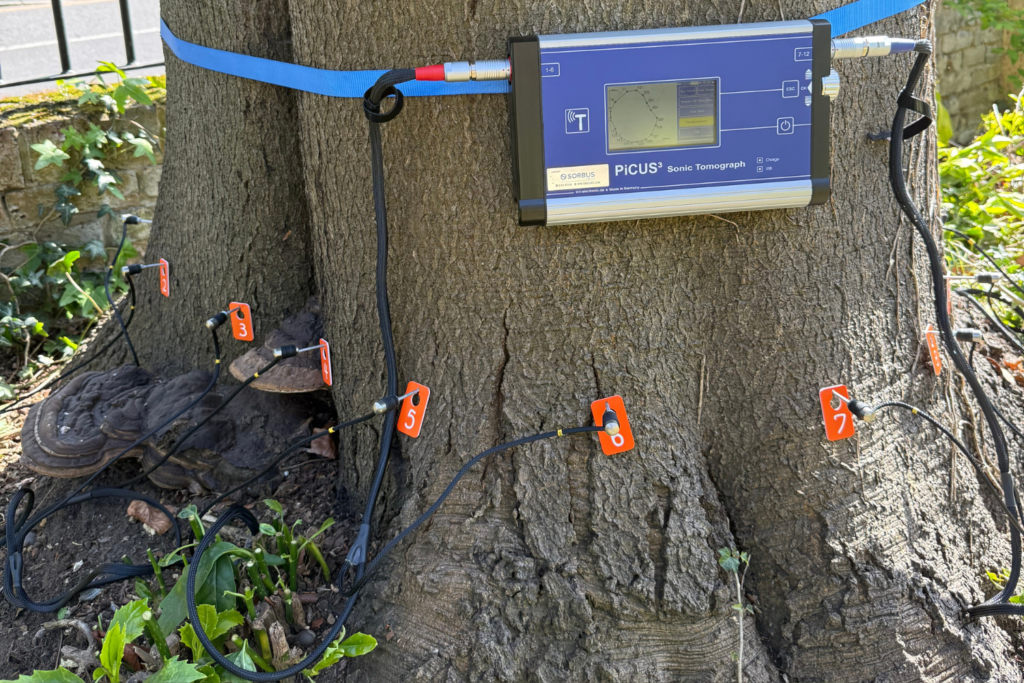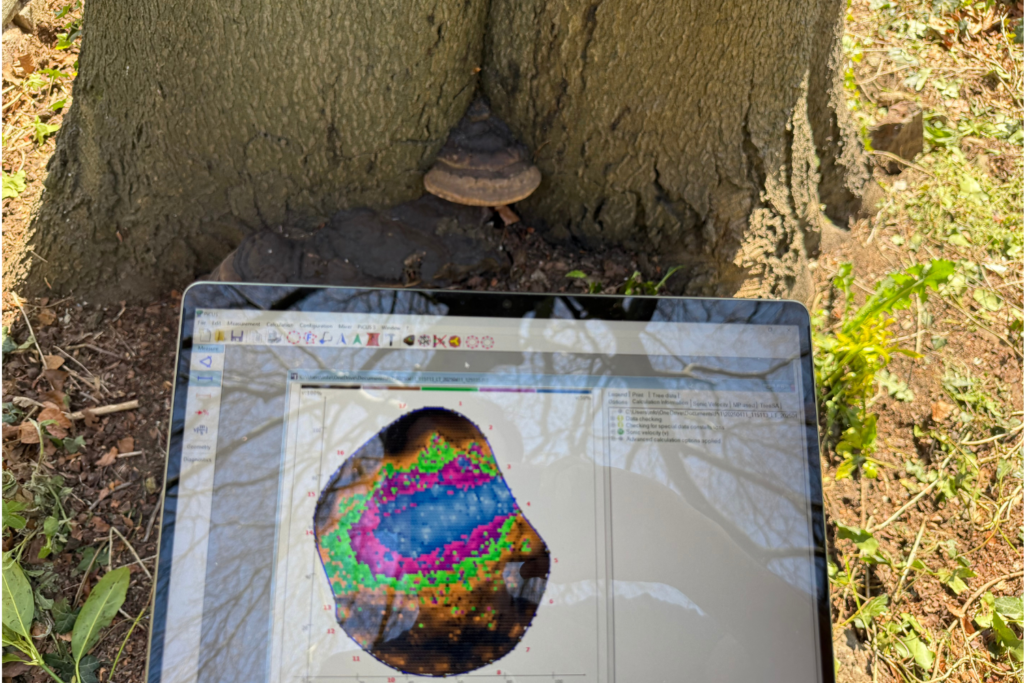Tree decay investigation is a vital component of responsible arboriculture, particularly in urban and suburban environments. Hidden internal decay poses a serious risk to both public safety and property. Advanced tools like the PICUS Sonic Tomograph and the Resistograph Drill offer arborists a non-invasive and highly accurate means to assess the internal condition of a tree. In this blog post, we explore how these tools work, their benefits, and how they are used together to ensure tree safety and longevity.

The Importance of Tree Decay Investigation
Trees are living organisms, and like all living things, they are susceptible to disease, pests, and decay. Internal decay often develops invisibly, even while a tree appears healthy from the outside. Without proper detection, these compromised trees can fall unexpectedly, causing property damage or personal injury.
Early detection of internal decay allows arborists to take informed action — whether through pruning, treatment, or removal. This not only mitigates risk but also helps in preserving valuable trees that might otherwise be removed unnecessarily.
PICUS Sonic Tomograph: Non-Invasive Imaging
What is the PICUS Sonic Tomograph?
The PICUS Sonic Tomograph is a non-invasive diagnostic tool that creates cross-sectional images of a tree’s internal structure. It works by measuring the speed of sound waves as they travel through the wood. Since sound travels slower through decayed or hollow wood, the tool can detect and map areas of compromised tissue.
How the PICUS Works
To use the PICUS, sensors are placed around the tree trunk at a given height. The sensors then send and receive sound waves. The resulting data is used to generate a coloured tomograph — essentially a cross-sectional image that shows areas of sound wood, early-stage decay, and advanced decay.

Benefits of Using PICUS
- Moderately invasive in comparison to other devices.
- Clear visual representation of decay
- Helps in monitoring tree health over time
- Useful for high-value or protected trees
Resistograph Drill: Detailed Decay Detection
What is a Resistograph?
The Resistograph Drill is a minimally invasive tool that measures wood resistance as a fine drill bit penetrates the tree. The resistance data is plotted on a graph, highlighting variations in wood density. Low resistance indicates potential decay, cavities, or cracks.
How the Resistograph Works
The drill is inserted horizontally into the trunk or branch. As it penetrates the wood, it records resistance at very short intervals. This high-resolution data allows arborists to detect:
- Internal cavities
- Fungal decay
- Compartmentalised rot
- Cracks and splits
Benefits of the Resistograph
- Precise detection of decay and cavities
- Minimal damage to the tree
- Instant results
- Ideal for confirming PICUS results
Using PICUS and Resistograph Together
Combined Diagnostic Approach
The process begins with a Visual Tree Assessment (VTA), a ground-based inspection using industry-recognised techniques. This includes:
Visual inspection of the trunk, crown, bark, and root flare.
Sounding — lightly tapping the tree with a mallet to detect changes in resonance that might indicate cavities or decay.
Identification of external signs such as fungal fruiting bodies (e.g. Ganoderma), cracks, deadwood, unbalanced crown, or abnormal growths.
- Targeted Drilling with the Resistograph
- Based on the PICUS scan, drilling confirms and measures decay levels.
- Data Interpretation
- Consultants review both datasets to assess structural integrity.
- Action Plan
- Findings guide tree management decisions such as bracing, pruning, monitoring or removal
Why Use Both Tools?
The PICUS offers an overview, but may miss small internal cavities. The Resistograph gives exact decay readings at specific points. Together, they give a full picture of internal structure, enabling the most accurate decision-making for tree safety and preservation.
Applications of Tree Decay Investigation
- Tree decay investigation using these tools is especially valuable in:
- Public parks and urban green spaces
- Historic or heritage trees
- Trees near buildings, roads, or footpaths
- Trees with visible fungus or cracking
- Trees previously damaged or stressed
Enhancing Tree Management with Technology
Arboriculture has evolved with technology. Tools like the PICUS and Resistograph allow for:
- Evidence-based decision-making
- Safer urban tree management
- Reduction of unnecessary removals
- Improved documentation for reports
- Better care for heritage and high-value trees
Conclusion
Accurate Decay Detection for Safer Trees
Tree decay investigation using the PICUS Sonic Tomograph and Resistograph Drill is a highly effective way to assess tree health and structure. Together, they provide detailed insight into internal decay, enabling arborists to take informed, precise, and proactive steps to manage trees responsibly.
If you suspect one of your trees may be compromised, speak to a qualified arborist experienced in using these advanced diagnostic tools.
Call 07709 051535 or Email info@londontreesurveyconsultants.co.uk to Book Your Tree Survey Today






